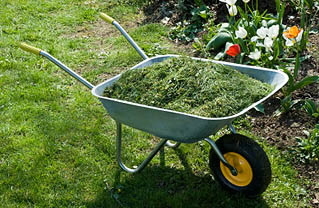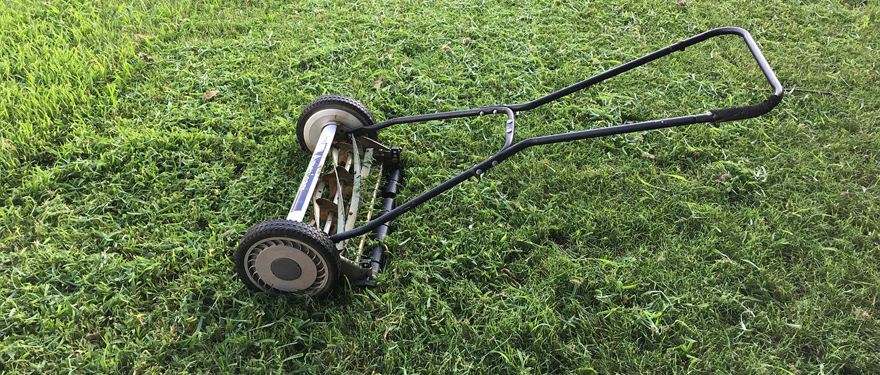Featured
Table of Contents
Read More About Fruit
Individuals concerned about look can choose a mulching lawn mower, he suggested, as those cut grass carefully. Still, turf cut with a rotary mower won't stick around for long."Lawn clippings are made of extremely soft tissue that decays quickly," Mann stated. While letting grass clippings lie is best, there are 2 reasons you might wish to retrieve them.
Second, never let yard clippings blow into roads or walkways, since healthy or not the turf blades high in nutrients can trigger problems for sewage systems and waterways. Here are a few other tips for cutting your lawn the finest way: "The sharpness of the blade is vital," Mann stated. People cutting with a dull blade are shredding their yard instead of appropriately cutting it, which leaves space for fungis to attack.
Often, it can trigger lawn to pass away. Altering the lawn mower blade or sharpening it once a year can prevent that. A lot of grass varieties throughout the country prosper at 2.5 to 3 inches, however some, such as those in Florida, may like to be cut much shorter or taller, Mann stated. If you're unsure of how long to leave your yard, consult a landscape expert about what ranges of grass are growing in your lawn.
This info was assembled by Anoka County. For additional recyclers in your area, search online. Any recycler wanting to be included to this list might contact recycle@co.anoka.mn.us!.?.!. The info offered in this directory site is assembled as a service to homeowners. A listing in this directory does not imply recommendation or approval by Anoka County.
My boy has actually been trying to construct of three big piles of yard included by plastic fencing. With all the rain we have actually had, the piles have ended up being damp, compacted, dense and very heavy. What can be done to make these stacks more reliable at breaking down? They have been turned, however we recently added a lot of grassand that plus the rain has actually made things a compressed mess.
That should be truly terrific for the garden ... no?-- Elizabeth in North Plainfield, New Jersey "No" is right, Elizabeth. 'Green manure' is a crop that you grow to plow into the ground as living fertilizer. What your child has is just a big green stinky mess. (Actually, THREE big green stinky messes.) This is a common error for rookie composters, particularly in the summer, when grass clippings are abundant.
Those clippings are REALLY high in Nitrogenabout 10%. That's practically the exact same level you 'd find in truly HOT manures, like bat and bird guano. In the most basic sense, these Nitrogen abundant components do not end up being the compost in a stack; rather they offer food for the billions of little bacteria that fuel the procedure of turning the other stuffthe so-called 'dry browns' that need to make up at least 80% of a pileinto the garden gold our plants so yearn for.
Discover More About Compost
The advantage of including things like lettuce leaves, apple cores and broccoli stalks to a compost pile or is primarily in the soothing of your recycling conscience, not in their ability to produce high quality garden compost. Now you can utilize clippings to make terrific compost, but to do so you need to blend little quantities of well-shredded grass clippings in with big quantities of well-shredded leaves.
(The very best compost heap follow the Goldilocks rule: Not too wet and not too dry. Lots of airflow too. I understand, Goldilocks didn't mention air flow. But she should have.) Anyhow, the result of such a worthy enterprise is the evasive, much popular garden change referred to as "hot compost". Garden compost that cooks up rapidly with the aid of a natural source of high Nitrogen is far better food for your plants and provides much more life for your soil.
And it's the finest kind for making garden compost tea. "Cold compost"the things that results when you simply pile a lot of things up, expect the finest and actually get some ended up material after a year or socan be a great plant food and soil improver, however hot compost is MUCH much better.

I fear that your big piles of slimy wet turf clippings will not enhance one bit with the passage of time. Just the opposite in fact. Ah, however your timing is great to get it right, as we are fast approaching fall leaf fall. Let great deals of leaves collect on the yard throughout a drought (do not let damp leaves accumulate), review them with a mower, bag up what must be a best mix of great deals of outstandingly shredded leaves and a little amount of well-shredded turf and then empty this mix into a big wire cage, a slatted wooden bin, a or something else to hold all of it in place nice and cool.
(People who tell you to 'layer' the ingredients in a compost heap failed physics.) Yes, this will just use a small portion of the clippings produced by the average lawn, which's an advantage. Due to the fact that beyond that autumn leaf drop window, you should NOT be bagging your turf clippings.
I utilize "quotes" due to the fact that there's no 'mulch' of any kind involved here. A bad name for an outstanding instrument of sustainability, mulching lawn mowers crush clippings into a nearly unnoticeable powder that they then return to your lawn. A powder that's 10% Nitrogen; about as high a natural number as you can get.
DON'T utilize any clippings from an herbicide-treated yard in a compost heap. Some of the potent chemicals in usage today can make it through even hot composting and might eliminate any plants that get the compost later. Oh, and stop using that hazardous things too!!!.
Learn More About Expert
The Department of Public Works supplies core civil services for the safety and benefit of the people of Dayton. These important services-- consisting of Civil Engineering, Fleet Management, Parks and Forestry, Street Maintenance, and Waste Collection-- all boost Dayton's quality of life. Click one of the links to the delegated check out highlighted services offered by Public Works.

What can I say? Lawn clippings are indispensable to composting. But you require to discover how to do it appropriately so both your yard and compost bin enjoy! A lot of property owners rapidly recognize that their garden compost bin or system can not manage all that lawn! The following details will help you to better understand how to recycle those grass clippings.
So, let's begin there. Forget those long-held beliefs that yard clippings left on a lawn smother the yard below or trigger thatch. Lawn clippings are in fact good for the lawn. From now on, don't bag your lawn clippings: "turf cycle" them. Grasscycling is a basic, easy chance for every single homeowner to do something great for the environment.
And the finest part is, it takes less time and energy than bagging and dragging that grass to the curb. Like the fellow in the image to the left, you might even take your lawn clippings out for a Sunday bike flight; now that's grasscycling taken to the severe! Grasscycling, in brief, is the practice of leaving turf clippings on the lawn or using them as mulch.
Turf clippings include water-saving mulch and encourage natural soil aeration by earthworms. No bagging or raking the yard (Whew!) Plastic yard bags don't end up in the garbage dump 50% of your yard's fertilizer requirements are fulfilled, so you minimize time and cash spent fertilizing Less contaminating: lowers the need for fertilizer, pesticides and herbicides Non-thatch triggering, thus making a yard vigorous and long lasting Makes you feel great and green all over! Yahoozy! Not only does it make looking after your lawn easier, however grasscycling can likewise reduce your mowing time by 50% due to the fact that you do not have to get later on.
To grasscycle appropriately, cut the lawn when it's dry and constantly keep your mower blades sharp. Remove no greater than 1/3 of the leaf area with each mowing. Trim when the yard is dry. Use a sharp lawn mower blade. A dull lawn mower blade bruises and tears the lawn plant, leading to a rough, ruined appearance at the leaf idea.
In the spring, rent an aerator which removes cores of soil from the yard. This opens the soil and permits higher movement of water, fertilizer, and air by increasing the speed of decay of the grass clippings and enhancing deep root development. Water completely when needed. Throughout the driest period of summer season, lawns require at least one inch of water every 5 to 6 days.
Discover More About Sage
Grass clippings, being primarily water and really rich in nitrogen, are troublesome in garden compost bins since they tend to compact, increasing the chance of ending up being soggy and discharging a strong ammonia-like odor. Follow these suggestions for composting this important "green", consequently minimizing smell and matting, and increasing quick decay:, intermixed in a 2-to-1 ratio with "brown" products such as dry leaves or plant debris (saving/bagging Fall's leaves is perfect for Spring/Summer yard composting). That's an average of seven hours per season. Heck, that's a day at the beach!. No special lawn mower is needed. For best results, keep the mower blade sharp and mow only when the grass is dry. When clippings break down, they launch their nutrients back to the yard. They include nitrogen, potassium and phosphorus, as well as lesser amounts of other vital plant nutrients.
There's no polluting run-off, no usage of non-renewable resources and no damage to soil organisms or wildlife. The expense of trucking yard clippings to garbage dump websites comes out of residents' taxes. This is an inefficient practice: all those nutrient-rich clippings could be fertilizing individuals's yards, therefore conserving money on fertilizers and water costs.
Grasscycling is an accountable ecological practice and an opportunity for all homeowners to lower their waste. And the very best part is, it takes less energy and time than bagging and dragging that grass to the curb. Today, 58 million Americans spend approximately $30 billion every year to preserve over 23 million acres of lawn.
The exact same size plot of land could still have a small yard for entertainment, plus produce all of the vegetables needed to feed a household of 6. The yards in the United States take in around 270 billion gallons of water a week: enough to water 81 million acres of organic veggies, all summer season long.
farmland, or roughly the size of the state of Indiana. Lawns utilize 10 times as many chemicals per acre as industrial farmland. These pesticides, fertilizers, and herbicides run into our groundwater and evaporate into our air, triggering widespread pollution and worldwide warming, and greatly increasing our danger of cancer, heart problem, and abnormality.
In reality, lawns use more devices, labor, fuel, and farming contaminants than commercial farming, making yards the biggest agricultural sector in the United States. But it's not simply the property lawns that are squandered on grass. There are around 700,000 athletic premises and 14,500 golf courses in the United States, much of which utilized to be fertile, efficient farmland that was lost to designers when the local markets bottomed out.
To trim effectively, a number of concerns should be thought about: height, frequency, clipping elimination, and blade sharpness. The chart below recognizes the most typical ranges of turfgrass grown in backyards, and the height to set your lawn mower. Check out the tips listed below for further guidelines. Kentucky Bluegrass 2.5-3.5" 4" Fine/Tall Fescue 2.5-3.5" 4" Seasonal Ryegrass 2.5-3" 4" Bermudagrass.5-1" 2" Zoysia.5-1" 2": Under many scenarios, yards need to be mown at 2.5-3-inches.
Latest Posts
What Is The Best Type Of Insulation For Soundproofing?
Pink Mandevilla - White Flower Farm
Mandevilla Care - By Roger Marshall - Hartley Botanic